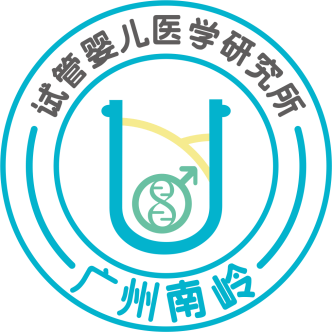Egg collection technique
Egg collection (commonly known as egg retrieval) is one of the important steps in the process of in vitro fertilization, which involves obtaining mature eggs from the ovaries of women. The following is the general process for egg collection:
1. Preparation stage: Before egg collection, women usually need to use hormone drugs to promote ovulation (promote egg development). These drugs are injected according to the doctor's guidance to stimulate the production of multiple follicles in the ovaries. During this process, doctors will conduct regular ultrasound and blood tests to monitor the development of follicles.
2. Egg maturation monitoring: Through ultrasound and blood tests, doctors can determine whether the follicles have reached the mature stage. Once the follicles mature, the doctor will arrange for egg collection surgery.
3. Egg collection surgery: Egg collection is usually performed in the operating room, using local anesthesia or intravenous anesthesia. The doctor uses a slender catheter (called an ovarian stimulation needle) guided by ultrasound to enter the ovaries through the vagina and extract fluid from the follicles through the ovarian stimulation needle. The ovarian stimulation needle is connected to a negative pressure tube, and the egg is sucked in.
4. Laboratory processing: The collected eggs will be immediately sent to the laboratory for processing. In the laboratory, eggs are observed and evaluated. The quality and maturity of the egg will be evaluated, and then it will be fertilized with sperm.
5. Fertilization and embryo culture: In the laboratory, the egg will be fertilized with sperm. The fertilized egg will be cultured in a culture dish to provide an appropriate environment to promote embryo development.
6. Embryo transfer: After a certain period of cultivation, the embryo will be selected and transplanted back into the female uterus. This process is usually painless and does not require anesthesia.
Please note that this is only a general egg collection process, and the specific steps and details may vary depending on the practice of doctors or medical institutions. Before undergoing in vitro fertilization treatment, doctors will provide detailed explanations and guidance on the entire process, and answer any questions you may have.
The selection of in vitro fertilization (IVF) superovulation regimen is personalized and determined based on the condition of each woman and the advice of a doctor. Here are some common options for superovulation:
1. Short term plan (short ovulation induction plan): This plan is usually suitable for women with good ovarian reserves and a large number of follicles. In a short program, women will start injecting ovulation inducing drugs, usually gonadotropin-releasing hormone (GnRH) agonists, on the second or third day of their menstrual cycle. The effect of this drug is to inhibit the natural peak of luteinizing hormone (LH), thereby preventing premature ovulation of early follicles. Then, ovulation inducing drugs (usually human chorionic gonadotropin (hMG) or follicle stimulating hormone (FSH)) are injected for several days to promote follicle development. Finally, trigger follicle maturation and proceed with egg collection.
2. Rectangular plan (long-term ovulation induction plan): This plan is suitable for women with poor ovarian response. In rectangular cases, women usually start injecting GnRH agonists on the second or third day of their menstrual cycle, similar to a short regimen. Then, continue to use GnRH agonists for several weeks of treatment to inhibit natural luteinizing hormones. Afterwards, ovulation inducing drugs will be injected for several days to promote follicular development. Finally, trigger follicle maturation and proceed with egg collection.
3. Joint plan (joint ovulation induction plan): This plan combines the characteristics of short and rectangular plans. It is usually suitable for women who have a certain ovarian response but do not want to produce too many follicles. The specific steps and drug use of the joint plan will be adjusted according to individual circumstances.
When choosing a superovulation regimen, doctors will consider the woman's age, ovarian reserve, past fertility history and response, and other related factors. Doctors will develop the most suitable plan based on individual circumstances to maximize the success rate of egg development and conception. Therefore, it is recommended to consult and discuss in detail with experienced reproductive doctors to determine the most suitable superovulation plan for your personal situation.
In addition to short plans, rectangular plans, and joint plans, there are also some other options for ultra rapid screening. These plans may vary depending on the preferences of doctors, the special circumstances of patients, or different medical practices. Here are some examples of other superovulation strategies:
1. Natural cycle plan: In the natural cycle plan, ovulation promoting drugs are not used. Doctors will monitor the ovulation time of women during their natural cycle and collect eggs at this time. This plan is suitable for patients with better ovarian response, fewer follicles, or other reasons that are not suitable for using ovulation promoting drugs.
2. Low stimulation plan: The low stimulation plan aims to reduce the dosage of ovulation inducing drugs to reduce ovarian response and the risk of multiple pregnancies. This plan is suitable for patients who are older or have weaker ovarian responses.
3. Improvement plan: The improved superovulation plan is a personalized and customized plan based on specific patient needs and clinical conditions. For example, for patients with certain special diseases, doctors may adjust the superovulation plan based on the characteristics of their disease.
The selection of these superovulation regimens depends on multiple factors, including the patient's age, ovarian reserve, number of follicles, past fertility history, the doctor's experience, and the practice of medical institutions. The final decision should be the result of joint discussion and determination between the patient and the doctor. Therefore, it is recommended to consult with an experienced reproductive doctor in detail to understand the options for super ovulation stimulation that are suitable for your personal situation.
For older women, in addition to the superovulation program, there are other alternative options that can be considered to improve fertility. Here are some possible options:
1. Egg donation: Egg donation is an option where young women donate eggs for older women to conceive. This can provide healthier and younger eggs, increasing the chances of conception and successful pregnancy. Egg donation usually requires in vitro fertilization (IVF), in which the donated egg combines with its partner or donated sperm and is then transplanted into the recipient's uterus.
2. Embryo transfer: If older women have undergone one or more IVFs and obtained frozen embryos, embryo transfer may be considered. This can avoid further egg collection and fertilization processes. Choosing the best embryo for transplantation can increase the chances of successful conception.
3. Assisted reproductive technology: In addition to superovulation regimens, there are other assisted reproductive technologies that can be considered, such as ovarian tissue freezing, egg freezing, intracytoplasmic sperm injection (ICSI), etc. These technologies are selected based on the specific situation of the patient and the advice of the doctor.
4. Eugenics screening: For older women, conducting eugenics screening can help eliminate the risk of embryonic chromosomal abnormalities. This can be achieved through methods such as embryonic biology testing (PGT) or non-invasive prenatal gene testing (NIPT). Screening for healthy embryos can increase the chances of successful pregnancy and healthy babies.
The selection of these alternative solutions should be based on individual circumstances, doctor's advice, and feasibility. It is recommended to consult and discuss in detail with experienced reproductive doctors to understand alternative options that are suitable for your personal situation, and evaluate their potential risks and chances of success.
LATEST NEWS
- Embryo chromosome screening 2023-12-22 15:25:00
- Embryonic genetic diagnosis 2023-12-22 15:23:48
- Embryonic biology testing 2023-12-22 15:22:11
- Egg collection technique 2023-12-22 15:20:00
- Overview of the success rate of in vitro fertilization technology 2023-12-22 15:15:45
- Overview of IVF technology 2023-12-22 15:13:46
- What should elderly couples pay attention to when undergoing IVF? 2023-12-22 15:12:02
- What kind of embryo is called "beauty"? 2023-12-22 15:09:55
- What is AMH? 2023-12-22 15:08:40
- Medical Science Popularization 2023-12-22 15:06:34
Customer communication group, scan the code to join

Business QQ: 1695311298 Email: 1695311298@qq.com
Copyright © Guangzhou Nanling IVF Medical Research Institute
